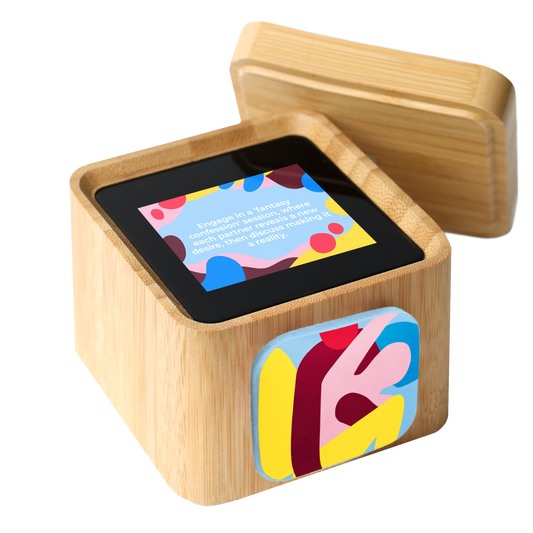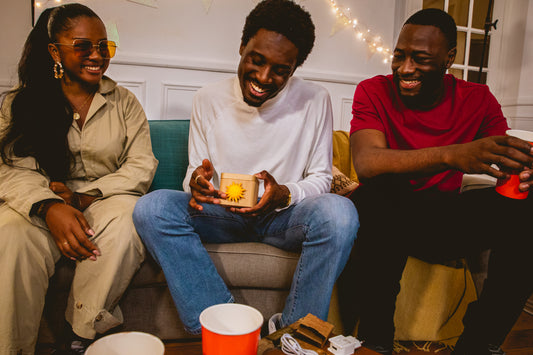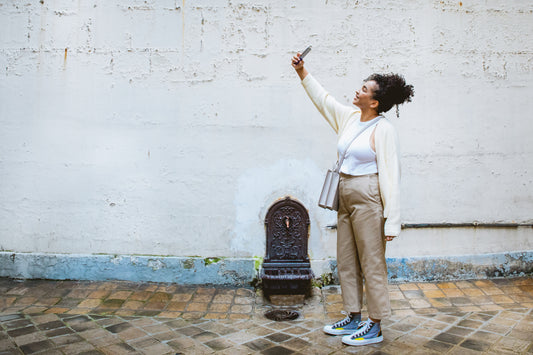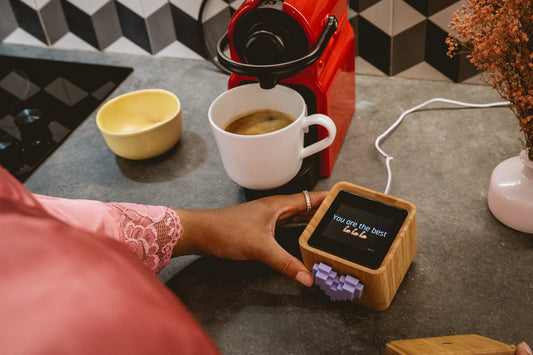Humans’ primary means of communicating is through our words. The physical words we speak out of our mouths are a large part of how we interact with the world. There are roughly 6,500 languages spoken in the world currently, and that’s not even including the many different dialects and languages spoken in smaller areas of the world, such as in tribes and populations in hard-to-reach places.
It’s safe to say that language and how we communicate that language is an integral part of our adaptation and understanding of others and ourselves in the world. But what if we told you that communication doesn’t stop there?
That there’s a whole other world of possibilities for interaction? Though words are incredibly important, there are other ways to communicate. Communication is not limited to the sound coming out of someone’s lips, but instead, there are multiple ways that it’s available.
One of those ways is through nonverbal communication. This specific type of communication is unique, particularly when applied to showing intimacy and affection in relationships. Though verbal communication is a vital part of any romantic relationship, it’s also extremely important to have nonverbal communication in your relationships as well.
In this article, we’re going to discuss how you can have nonverbal communication to show love to your partner and how it can be just as important as verbal!
What Is Nonverbal Intimacy and Affection?
By definition, nonverbal communication is the transfer of information through the use of body language including eye contact, facial expressions, gestures, and more. One of the most unique elements of nonverbal is that it is universal. Across the world, many nonverbal gestures mean the same thing. For example, furrowing your brows can communicate confusion or anger. Giving a thumbs-up to someone could communicate confirmation or feelings of positivity.
In particular, nonverbal intimacy is a product of interpersonal interaction that can involve flirtation, positive reinforcement, and affectionate nonverbal communication, such as hugs, smiling, kissing, etc. This specific intimacy is a large part of any romantic relationship.
Think of it like this: you and your partner are making dinner together. As they squeeze past you to get something, they put their hands on your waist or your arm. While you’re eating your meal, you wink at your partner. These small gestures communicate affection and love and help people to feel loved at any given time, even when the words “I love you” aren’t uttered.
Though saying those words and being affirming with words is vital to many relationships, it’s not the only way to show affection. Sometimes those small moments of affection can make the biggest difference. Words are a powerful means of communication but words can only say so much.
Feeling emotionally supported and encouraged can be communicated through nonverbal cues. Affirming your love for your partner nonverbally by going to hold their hand in the parking lot, or making eye contact and engaging in conversation are ways to be supportive in a relationship and show them you care.
There are many ways to show nonverbal intimacy. Wondering how you can do that? You’ve come to the right place! Read on to see how you can make sure you are showing your partner love and affection nonverbally.
1. Proximity
One of the most well-known ways to show nonverbal affection is by the proximity you are to someone. Proxemics is defined as the way people perceive and use the space around them. Through research, there have been designated four different “distance zones” and they were created as a function for the different types of interpersonal interactions we all have in our everyday lives.
The types of zones are: intimate (0-2 ft.), personal (2-4 ft.), social (4-12 ft.), and public (more than 12 ft.). Most romantic relationships occur in the closest zone, also known as the intimate distance. An example of the intimate distance being used could be when you are at a social gathering with your partner, you will most likely stay by each other’s side, and be pretty close at that, either touching shoulders or within inches of each other. There are natural means of proximity that we give to different people in our lives, especially romantic roles.
According to research, even the way in which the body is angled towards someone can nonverbally communicate affection. By facing someone directly, it’s considered an intimate cue. Whereas, facing someone at an angle, sitting next to them instead of across, or turning your back are instinctive cues of disinterest and lack of affection.
If you’re wanting to incorporate more nonverbal intimacy into your relationship, try paying attention to the proximity of you and your partner. Next time you’re at a party, touch shoulders while you’re chatting with your friends. It automatically creates closeness and will help the other person feel loved.
2. Physical Touch
Known widely as one of the five love languages, physical touch is a large nonverbal cue of intimacy and affection. It’s important to note that not every person enjoys physical touch or feels love in this way. At the same time though, touch is noticed as a nonverbal means of communicating affection and is worth discussing here.
Physical touch can be as small as touching legs when you sit down next to each other, or putting your arm around them while you’re waiting in line. These small gestures of touch and closeness communicate a lot. This is a large means for how people feel loved in a relationship.
Burgoon and Newton, two professors that are well-versed in these topics, have defined nonverbal involvement in five different dimensions. Nonverbal involvement meaning the degree to which a person is an engaged, active participant in a social interaction. Those five dimensions are known as being the following:
- Immediacy, AKA physical touch
- Expressiveness, AKA facial animation
- Altercentrism, AKA attention to the partner
- Smooth interaction management, AKA coordinated turn-taking
- Composure, AKA few vocal pauses
The first one listed, immediacy, also known as physical touch, is known to be a means of nonverbal involvement. Studies have shown that observers perceive people to be more intimate when they use involvement behaviors such as eye contact, forward leans, positive affect cues like smiling, and more.
Physical touch is a great means of nonverbally showing your partner more intimacy and affection and ensuring they are feeling loved.
3. Gifts
Another way of showing nonverbal affection is by giving gifts, which is also known as another one of the five love languages. Love can be communicated in many different ways, but some of the ways that it can be shown nonverbally are by smiling, positive touch, mutual gaze, spending time together, and giving gifts.
Gifts are a special way to show someone your love for them. They can communicate intentionality, especially if those gifts are personalized and specific to the partner receiving them.
A particular gift that is a great means of showing nonverbal affection is the Lovebox. The Lovebox is a connected messaging device that pairs with an app to go beyond regular communication and deliver special expressions of affection. Designed as a small wooden box with a heart on the front that spins when you receive a message, this gift is the perfect way to show your partner your love for them.
With the Lovebox you can send photos, draw directly on the photos, stickers, drawings, schedule messages, and more! This particular gift is a great way to show nonverbal affection when you’re not physically with someone. Whether you’re at work or you’re miles away, by sending a sweet message or drawing to the Lovebox, your partner will receive it and instantly feel more connected to you and feel the love you have for them.
It’s interactive too! Once they receive the message by taking the top off, they can spin the heart back and it will send a waterfall of hearts back to you on the app. Doing this throughout the day to let them know you’re thinking about them is a great way to increase intimacy and affection in your relationship.
Gifts don’t have to break the bank or be too elaborate. Sometimes all someone needs is a reminder in the day that you love and appreciate them.
4. Altercentrism
Mentioned briefly before, altercentrism is related to showing genuine interest in someone and what they are communicating. It even stretches beyond that as referring to recognizing spoken, as well as unspoken, messages to one another. Being able to correctly interpret someone’s nonverbal cues is an essential part of any relationship, especially in a romantic sense.
No one likes to feel as if they aren’t being listened to or acknowledged. Altercentrism can be applied in conversations by paying attention during the conversation, nodding, giving eye contact, and just generally showing genuine interest in what they are saying.
This nonverbal cue communicates to your partner that you care about what they have to say and value their opinions and thoughts. If during a conversation, your eyes are darting all over the room, your face is smug and disinterested, and you aren’t nodding, smiling, or encouraging them to continue, your partner will begin to think that you don’t care about what they have to say and could be detrimental to your relationship.
This can also be known as kinesics which encompasses nonverbal behaviors such as facial expressions, eye behavior, body movements, and gestures. Intimate kinesic expressions include smiling, increased eye contact, and specific gestures that communicate closeness and affection.
Did you know that the face is actually considered the primary and most trusted source of emotional information? The face carries a lot of important messages! Our most natural responses to things usually happen in our faces.
If someone is super sour, our faces will mostly scrunch up. If someone says something funny, our faces naturally smile and even laugh. The expressions we hold on our faces can communicate a lot to a partner and are important to be aware of in relation to nonverbal cues.
This is why nonverbal affection is so important in relationships. It’s another way to be constantly affirming to each other and ensure one another that you are feeling seen and loved.
Nonverbal Is Just as Important
Saying the words “I love you” is important and should be said. But there are a lot of unsaid things that say so much.
In contrast with verbal communication, nonverbal communication is multimodal, meaning that people can say multiple things at once this way. The limitations of verbal communication are that people can only say one word at a time, whereas nonverbally they can engage in multiple positive involvement cues simultaneously. Scholars have even said that intimacy is largely communicated through these multi-channeled means of nonverbal cues.
Reciprocating these nonverbal cues is just as important. If only one party is engaging in positive involvement behavior, then intimacy will be lacking. It has been said that intimate interaction requires participation by both partners rather than just one. Having a conversation about how you both can make sure you’re showing each other the same amount of attention and affection will go a long way.
Wrapping It Up
There are so many ways that someone can nonverbally communicate intimacy and affection and it’s a vital part of any relationship to do so. Verbal communication does have limited capabilities and words can be misinterpreted, especially relating to tone or context. Language is a beautiful but tricky thing because everyone can view different words and the way those words are said differently. This further shows the limitations of verbally spoken language.
Of course, nonverbal cues can be misinterpreted, but usually across the board, they communicate mostly the same thing. Raised eyebrows with mouth wide open followed by a gasp usually means surprise. Or lack of eye contact with a turned away body can communicate disinterest. Being able to interpret these nonverbal cues are important in trying to implement them into your relationship and increase overall affection and intimacy!
Try any of the above ideas for showing more nonverbal affection to your partner. Whether it be through gifts like the Lovebox to remind them you’re thinking of them throughout the day, being aware of your proximity to them at any given time, or simply making sure you’re paying attention to them while they’re talking, these nonverbal cues are sure to increase intimacy and love in your relationship.
Sources:
Nonverbal Communication Skills: Definition and Examples | Indeed
Personal space Proxemics | Economic Times
(PDF) Nonverbal behavior in intimate interactions and intimate relationships | Research Gate














